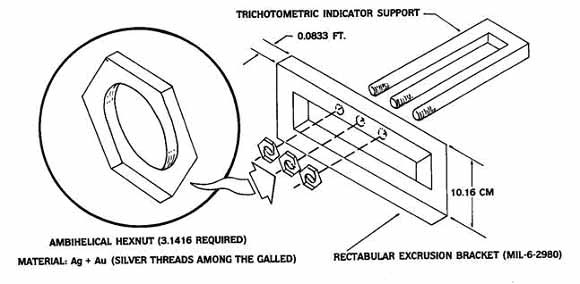
Close window
Extensive research in our laboratories has determined that a large percentage of minicomputer system program errors are being caused by parastatic conductance resulting from differential spurving of the hydroscoptic marselvanes located in the prefabulated amilite base of the unilateral detractor mechanism.
Neither International Business Machines or Digital Equipment Corporation has been able to offer any remedy for this troublesome situation other than to recommend manestically spacing the grouting brushes on the periphery of the nubbing purwell.
Although on the surface this would appear to alleviate the problem we have found that this leads to further complications causing the regurgitative wennel sprocket to transmit microgriffage to the anhydrous dangling pin, from whence it is modulated, amplified, and splitnagled, thus causing transendental hopper dadoscope failure. This, in turn, causes quasipiestic depleneration of the bitumogeneous sprandels thus leading to an even higher level of high RMP peak nivel-sheave voltage which further magnifies the amnesial slump.
It should be apparent that any successful solution has to be based on the regeneration of low-ohmic nofers combined with a high degree of medial interation of magneto-reluctance and resistance to atmospherical rillarah.
Fortunately, we have discovered a simple and effective remedy which involves merely modifying the spiral decommutator with the installation of a rectabular extrusion bracket and trichotometric indicator support (see attachment). These items should be purchased (out of petty cash) from any local supply house and installed immediately. Upon installations the above cited malfunctions should be reduced significantly and you should experience greatly increased non-reversible tremic amifacience.
* Note that the special ambihelical hexnut is unique in that any attempt to remove it in the conventional manner only succeeds in tightening it. Because of this design. the nut must be fully screwed on before it can be screwed off.
